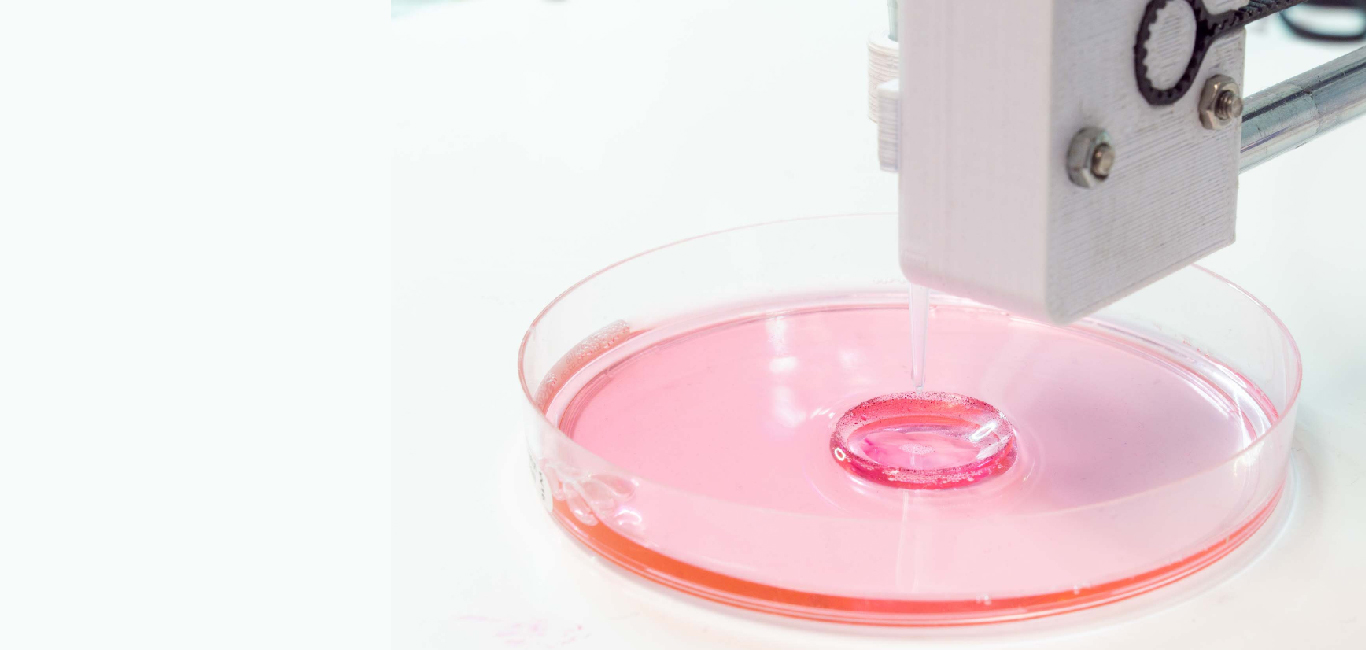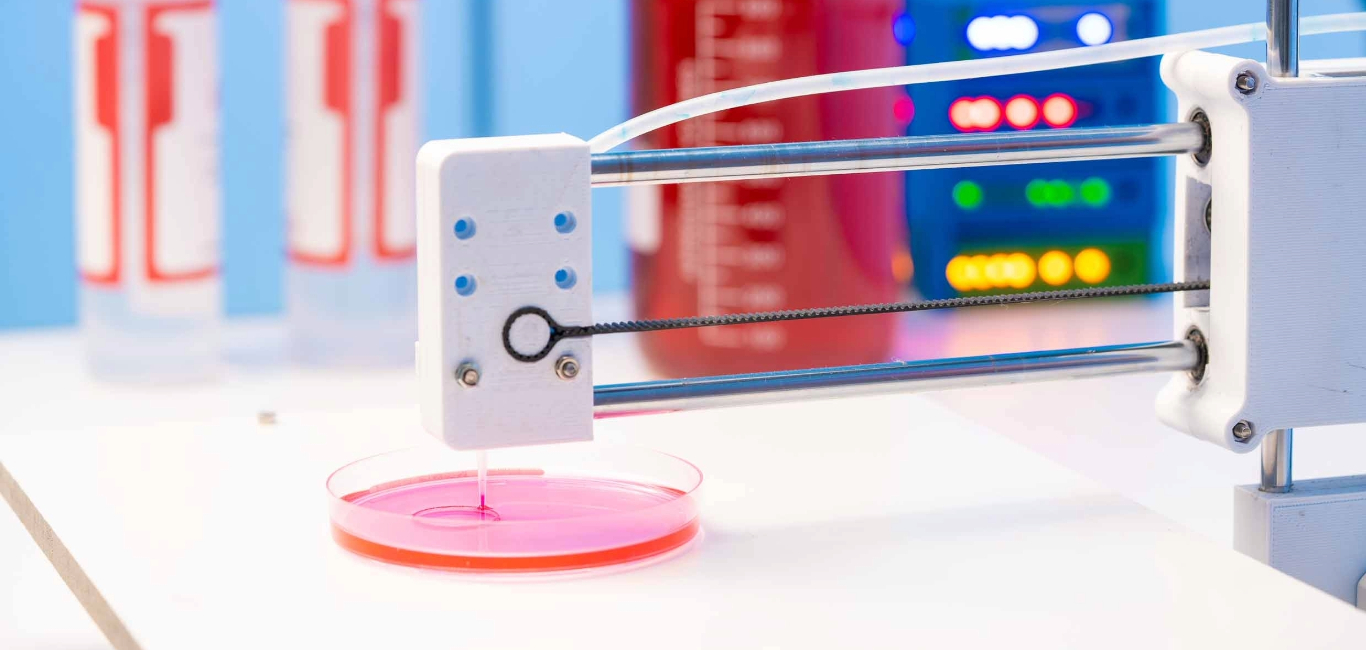
Producing artificial human organs on demand for transplant may still be in the realm of a science fiction movie. However, 3D bioprinting has already ushered in the beginnings of it; and we may only need an answer to how far it actually is from reality.
Globally there is a shortage of organs for transplant, forcing many organ receiving candidates to wait for a long time to secure an organ.
In India alone, the Ministry of Health and Family Welfare pegs the number of people dying of renal or kidney failure at 180,000 every year. Only 6,000 renal transplants are performed annually.
Researchers are now trying to narrow this huge gap between the demand and supply of organs, a problem that they say can be fixed with the help of 3D bioprinting technology. And while printing whole organs is not yet possible today, proponents of the technology say this could become a possibility as soon as 10 years.
Early successes
The roots of the 3D bioprinter, the technology behind the printing of organs, can be traced to the year 1984 when Charles Hull patented a process to print solid objects using a resin layer by layer. This process formed the basis of modern 3D printing with its application seen widely in manufacturing and now medical fields.
In the following years much research kicked off in the space of regenerative medicine and tissue engineering. Dr Anthony Atala, a vascular surgeon from Wake Forest University in the United States, in 1999 became the first in the world to create and implant a synthetic human bladder in the lab using a person’s own cells along with a scaffold material to hold them in place.
The surgery was successful, and the person did not have any serious complications. This helped to capture the imagination of scientists on the possibilities of 3D bioprinting.
“What if you could use the same techniques [of] 3D printing to print an organ?” says Dr Kaushik Chatterjee, Associate Professor at the Department of Materials Engineering and Centre for BioSystems Science and Engineering at the Indian Institute of Science (IISc), Bengaluru.
Just like an inkjet printer
Scientists are trying to do just this, but a with a few tweaks. While 3D printing uses materials like metal and plastic to print solid objects, a new version is needed when we talk about regenerating organs and tissue, Dr Chatterjee says.
Tissues and organs are printed with the help of cells and other biological materials This needs a printer that uses a special kind of ink called a bio-ink. It usually contains different cells and other materials required for stimulating the growth of these cells and biomaterials.
Otherwise, the bioprinter works very similar to inkjet printers we at home or in office. Except that this has a nozzle that can extrude out the bio-ink in a controlled manner to form the required shape.
“Using a bioprinter allows us to work with multiple cell types and to have more control number of cells that you can deposit,” says Piyush Padmanabhan, founder and CEO of Next Big Innovation Labs (NBIL) in Bengaluru.
NBIL, founded in 2016, currently works on making bioprinted skin. It also offers bioprinters that can be customised for others.
Where it gets complicated
While a lot of researchers have figured out how to print tissues, making the technology’s possibilities seem endless, printing of organs is where it gets complicated.
“If you try to print something like the liver it doesn’t contain liver cells alone. It also has many blood vessels. To capture the intricate details of the tissue, there are a lot of technical challenges to consider,” says Dr Parinita Agarwal, a senior research scientist at Pandorum Technologies, a Bengaluru-based company that is using 3D bioprinting to develop corneas and liver tissue.
Despite this, researchers are taking small steps towards making functional organs. At the Tel Aviv University in Israel researchers have used cells of a person and printed a heart complete with blood vessels.
Avoiding animal tests
Bioprinting is also seeing some success with the printing of thinner tissues like that of the cornea or the skin. Researchers from the L V Prasad Eye Institute and the Indian Institute of Hyderabad have made India’s first 3D printed cornea that has also been successfully tested in animals.
Cosmetics giant L’Oréal is in a research partnership with US-based bioprinting company Organovo to develop 3D human skin as an alternative to testing its products on animals. The move came in the wake of the European Union banning the sale of cosmetic products that have been tested on animals. The US, too, passed a bill that seeks to reduce animal testing for drugs before starting clinical trials.
Skin and cancer studies
The bottom line is that 3D bioprinted skin can closely mimic human skin making it an ideal platform to test drugs and cosmetics. This also reduces our reliance on animal testing.
“Globally people are exploring many applications of bioprinted tissues,” with skin being a leading contender, says Padmanabhan.
Bioprinting is also being used in cancer research. It is used to print tumours to study them better than has been possible. For instance, Glioblastoma, a type of lethal brain cancer, is being studied by researchers using 3D printed tumours that closely mimic the real ones. This is serving as a model to test the efficacy of new treatments for the condition.
Entering the mainstream
Most of the bioprinters that are found in India were initially in remote pockets or institutions like the IITs. However, that does not seem to be the case anymore.
“The biggest reason behind the small number of bioprinters here was due to lack of knowledge of the technology and its applications, but now that is slowly changing,” says Padmanabhan. He adds that the demand for bioprinters has grown in the past two years and an increasing number of institutions are looking to use bioprinters.
While research in India still seems to be in a nascent stage, the trend is slowly changing given the new interest for bioprinting technology.
IISc’s Dr Chatterjee says start-up companies like Pandorum are also making strides in printing tissues like the cornea. Dr Agarwal corroborates him and says they expect to test their 3D printed cornea in animal models soon.
Adding AI and new technologies
And while there is still a lot more work to be done, researchers are estimating that printing functional organs could be a reality soon given the pace of research. In June this year, Jennifer Lewis, a professor at Harvard University’s Wyss Institute for Biologically Inspired Engineering, told CNN that the soonest that could happen is in a decade’s time.
But to do this, bioprinters will need to be adapted to newer technologies.
“The future of bioprinting is now about creating intricate structures with more accuracy. The next development I see will be the introduction of artificial intelligence to bioprinters to reduce the errors that occur during bioprinting process,” says Padmanabhan.

















